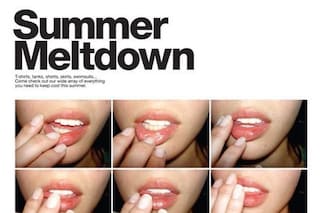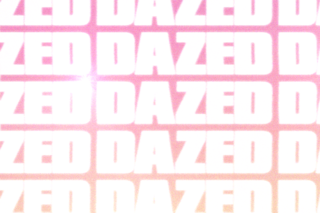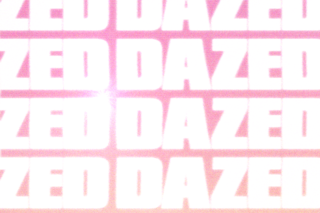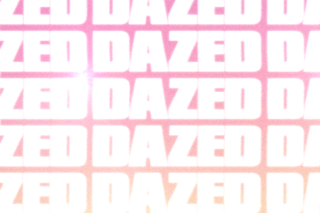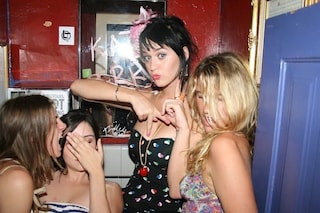With some of the 00s biggest bands releasing new music this year, and a wave of new acts adopting the era’s trippy electronic pop and strummy guitars, indie fever is officially back
Imagine this: the year is 2006. You make your way to Madame Jojos in Soho, past the wide-eyed revellers and into the bathroom where a pair of lads in Henry Holland shirts are doing lines of MCAT off the bog. It’s the era of dingy bars and DIY venues; trilbies and cheap plimsolls with Sharpie doodles; moustaches tattooed onto index fingers; amateur flash photography taken in front of grubby mirrors, and Alexa Chung sightings in Camden.
Indie is making a comeback, but not in the way you think. The mid-aughts style was touted to make a return under the label indie sleaze last year, as teens flocked to TikTok to debut Tumblr-inspired aesthetics plucked from the recesses of an Effy Stonem mood board. While the aesthetic has resurfaced to a certain degree – Miu Miu ballet flats are the autumn item du jour, so is smudgy black eye make-up – the trend has yet to fully trickle down from the internet into IRL.
What has returned, however, is the era’s trippy electronic pop and snappy guitar bands. Artists who originally came up in the 00s such as The Arctic Monkeys, Uffie, M.I.A., Santigold, and Hotchip have all released new music this year, while new acts like Pixel Grip, Bad Waitress, Jockstrap and Static Dress are making music that takes inspiration from the electroclash and bloghouse, where pinwheeling guitars and woozy synths evoke the era’s distinct, danceable sound. Not to mention the maximalist mashups popularised by Girl Talk, which are similar to the sprawling pop remixes on TikTok today. As it stands, we’re just one Razorlight “America” cover away from all full-on indie music nostalgia revival.
“It’s been enough time where we can see the era as a whole. The style, music and debauchery. It’s amazing that a new generation is discovering it, and actually embracing it. I think that in the age of such a leaning towards social and online presence people are really digging how raw it was back then and all the live party music that was rife at the time,“ says The Kooks frontman Luke Pritchard. “I think the fever has just come back,” agrees Gordon Raphael, producer for The Strokes and author of The World Is Going To Love This. “I saw the Strokes in Glasgow last month (TRNSMIT) and it shocked me to see 50,000 people – many super young fans in fact, singing every guitar riff, solo and lyric at the top of their lungs.”
In the underground, last generation’s cringe is fast becoming this generation’s treasure. A younger generation of ravers are ironically repurposing samples of “Mr Brightside” in between deconstructed club edits, while Two Shell drops “Sex Is On Fire” during a Boiler Room set, its anthemic hooks serving as a memey antidote to the overly serious club culture prevalent across European cities pre-pandemic. Having grown up in a decade where the accessibility of music tech has made even the most grassroots bedroom pop hi-fi, punctuated by blaring 808s and sleek production, everything doubles as club music – even pop. Indie music, its DIY approach and (intentionally?) shit production is a response to this.
It makes sense that we’re seeing a return to DIY culture post-pandemic. “People want something that’s going to wake them up, shake things up, and make them feel alive and present,” agrees Olivia, the admin behind the @indiesleaze Instagram account. “The music was so fun, lively, experimental, fluid, and collaborative. It was a very community-driven time in the music scene, and I think that’s something people are craving after years of lockdown.”
“People want something that’s going to wake them up, shake things up, and make them feel alive and present” – Olivia, @indiesleaze
Dubbed the sound of a new generation at the time, indie music was the next step along from 90s new wave and alt-rock; the growing presence of the internet meant that anyone (usually a young middle-class-looking white guy with a haircut) could pick up a guitar and start a band – and do away with the industry middleman for the first time. “The wild west of the online world and mp3 sharing led to unlimited possibilities and heightened creativity. The little guy had power over their artistry and the record labels were left scratching their heads,” she explains.
Olivia points to the parallels between the debauched atmosphere that birthed the scene and our post-pandemic lives. Nowadays, young people are choosing chaos, trading in the sleek, austere image of That Girl in exchange for a messier, goblin mode existence. They don maximalist and ironic outfits and smear on black mascara. Imperfection, with all its aesthetic quirks, has become the new status quo. Olivia adds, “The recession made things feel impossible, people were partying for their lives as a break from what we were being bombarded with in our day-to-day. Going out to a club or a party was therapeutic in a lot of ways.”
But there was a more sinister side to the indie scene. Set against an era of peak media misogyny, the bands dominating the circuit were mostly men and white, sexism was rife and queer representation was almost nonexistent. It’s an uncomfortable mirror to our current society, where Andrew Tate amasses billions of views on TikTok and anti-woke rhetoric rubs shoulders with traditionalist values, creating a sinister strain of conservatism that Vanity Fair writer James Pogue has recently referred to as the New Right. “Especially compared to international music scenes of the 2010s, it was still pretty much a boy’s club. God bless Karen O, Alison Mosshart, Meg White and Beth Ditto but really the music industry side, production and bands were male-dominated,” says Raphael.
Saying this, if the TikTok revival of emo and goth is anything to go by, subcultures that were largely associated with whiteness are becoming more diverse, so what’s to say the same won’t happen with indie? Besides, online and across pop culture, indie fever is seeping back into the cultural hivemind. Last month, Azealia Banks took to Instagram stories pretending to be Franz Ferdinand’s Alex Kapranos, before voicing her appreciation for M.I.A.’s Vicki Leekx, while Sam Levinson is releasing a film called The Idol with the tagline “the sleaziest Hollywood story”, starring indie horror filmmaker Eli Roth. Then there’s Yung Lean sporting a deep V-neck in his “Bliss” music video alongside FKA twigs. Be prepared: the indie revival is coming whether we like it or not.


